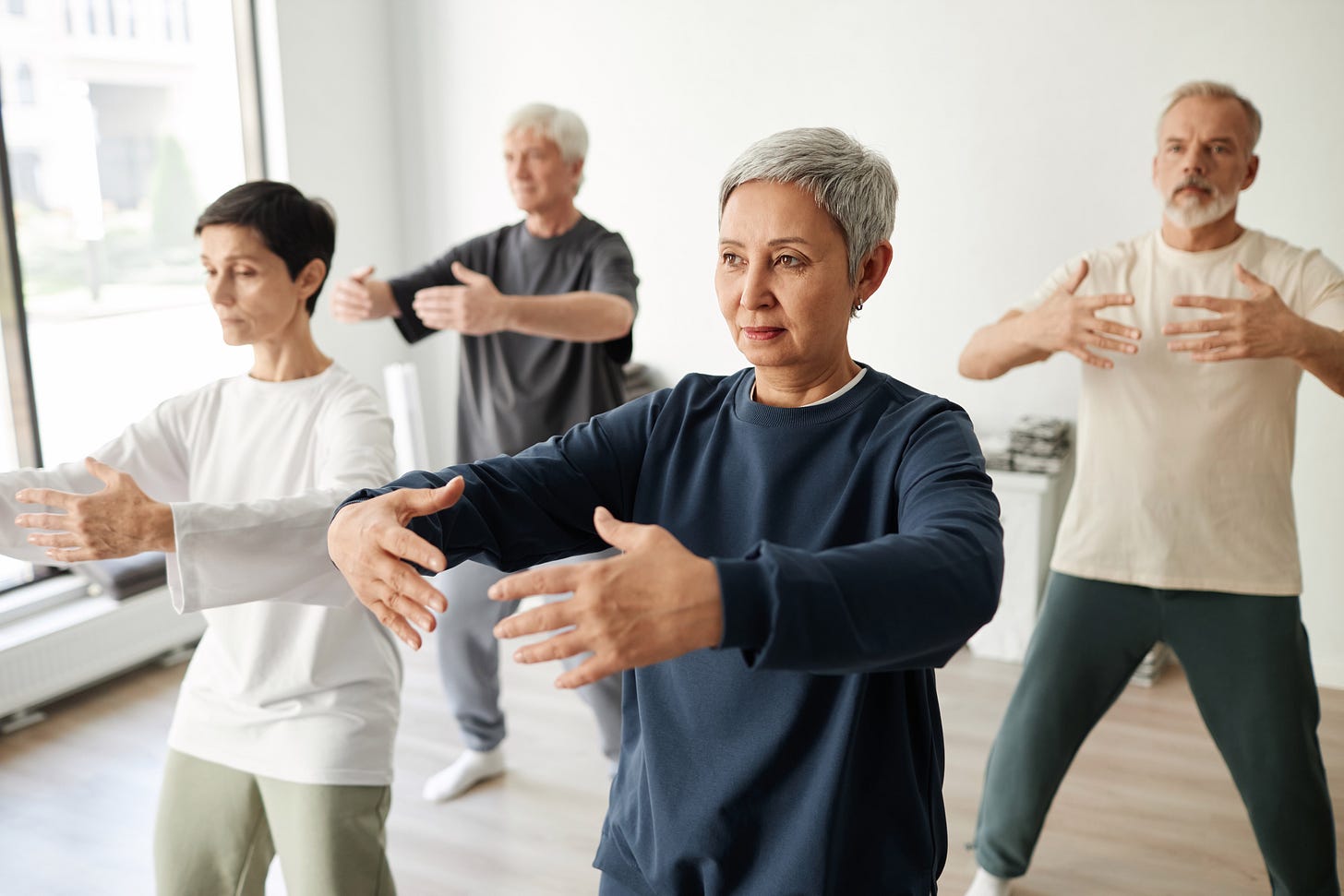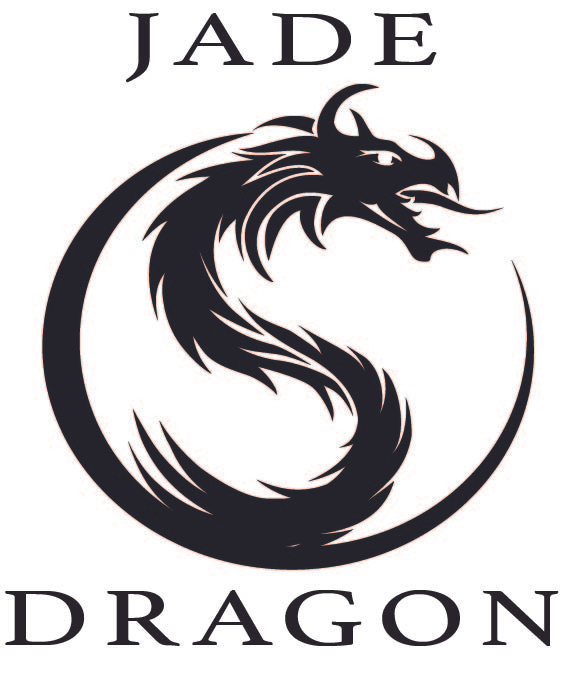Peer-Reviewed Research: Understanding the Mechanisms of Qigong in COVID-19 and Long-COVID Recovery
Qigong's impact on COVID-19 and Long-COVID recovery is rooted in its ability to enhance physiological function, regulate the immune system, and address psychological health. Below, we explore the detailed mechanisms by which Qigong benefits individuals recovering from these conditions.
1. Enhancing Pulmonary Function
Mechanism:
COVID-19 directly impairs pulmonary function through inflammation, alveolar damage, and impaired gas exchange, often leading to hypoxia and respiratory distress. Long-COVID exacerbates these issues, leaving many patients with chronic dyspnea and reduced lung capacity.
Strengthening Respiratory Muscles: Qigong exercises, such as Liu Zi Jue (Six Healing Sounds), incorporate controlled breathing patterns that strengthen the diaphragm and intercostal muscles, improving respiratory efficiency (Peng et al., 2020; Liu et al., 2021). Deep diaphragmatic breathing enhances lung compliance, helping to expel residual carbon dioxide and optimize oxygenation.
Improving Alveolar Ventilation: Qigong promotes slow, rhythmic breathing, which increases the time for oxygen-carbon dioxide exchange in the alveoli. This is particularly crucial for COVID-19 patients who suffer from impaired alveolar function due to inflammation or fibrosis.
Restoring Airway Patency: Qigong breathing techniques encourage gentle bronchial dilation, reducing airway resistance. This effect is supported by the parasympathetic activation induced by mindfulness during Qigong practice.
2. Modulating the Immune System
Mechanism:
COVID-19 triggers an overactive immune response, often resulting in a cytokine storm—a hyper-inflammatory state that can cause widespread tissue damage. In Long-COVID, immune dysregulation may persist, leading to chronic inflammation and autoimmunity.
Reducing Pro-inflammatory Cytokines: Studies show that Qigong reduces levels of pro-inflammatory cytokines such as IL-6, TNF-alpha, and CRP (Feng et al., 2020; Marks, 2023). This occurs through the reduction of sympathetic nervous system activity and cortisol levels, both of which are linked to systemic inflammation.
Enhancing Anti-inflammatory Activity: By activating the parasympathetic nervous system, Qigong promotes the release of anti-inflammatory mediators, including IL-10. This helps to rebalance immune responses and alleviate chronic inflammation in Long-COVID.
Boosting Innate Immunity: Qigong increases the activity of natural killer (NK) cells and macrophages, which are essential for clearing viral particles and preventing secondary infections. Marks (2023) highlighted these effects in populations vulnerable to immune dysfunction, such as older adults and those with obesity.
3. Regulating Autonomic Nervous System and Reducing Stress
Mechanism:
The autonomic nervous system (ANS) plays a central role in regulating immune responses and inflammation. COVID-19 disrupts this balance, often leading to heightened sympathetic activity and impaired parasympathetic function.
Balancing the Autonomic Nervous System: Qigong exercises elicit a relaxation response, characterized by increased parasympathetic tone and reduced sympathetic activation (Antonelli & Donelli, 2024). This shift decreases systemic inflammation and improves cardiovascular function, which is often compromised in Long-COVID.
Improving Heart Rate Variability (HRV): HRV, a marker of ANS balance, is significantly reduced in COVID-19 patients. Qigong has been shown to improve HRV, reflecting better vagal tone and enhanced resilience to stress (Liu et al., 2021).
Mitigating Stress Hormone Activity: Chronic stress increases cortisol levels, which suppress immune function and exacerbate inflammation. By reducing stress and promoting mindfulness, Qigong lowers cortisol, improving overall immune health (Feng et al., 2020).
4. Reducing Systemic Inflammation
Mechanism:
Systemic inflammation underpins many of the severe symptoms of both COVID-19 and Long-COVID, including fatigue, muscle pain, and brain fog.
Interrupting the Cytokine Storm: Qigong mitigates the excessive release of cytokines such as IL-1, IL-6, and TNF-alpha. This effect is partly mediated by vagal nerve stimulation during breath-focused exercises, which activate the cholinergic anti-inflammatory pathway (Marks, 2023).
Improving Mitochondrial Function: Chronic inflammation impairs mitochondrial function, leading to fatigue and reduced energy production. Qigong's anti-inflammatory effects indirectly support mitochondrial recovery, enhancing cellular energy availability and reducing fatigue (Antonelli & Donelli, 2024).
5. Restoring Neurocognitive Function
Mechanism:
Long-COVID is often associated with neurocognitive deficits, such as "brain fog," memory issues, and difficulty concentrating. These symptoms are thought to result from neuroinflammation and impaired cerebral blood flow.
Enhancing Cerebral Oxygenation: Qigong’s breath control techniques improve oxygen delivery to the brain by enhancing pulmonary efficiency and systemic circulation. This supports cognitive recovery and reduces fatigue.
Reducing Neuroinflammation: Chronic neuroinflammation, often driven by systemic cytokines, can disrupt brain function. Qigong’s ability to lower systemic inflammation likely extends to the brain, promoting neural repair and reducing cognitive symptoms (Peng et al., 2020).
Facilitating Neuroplasticity: The meditative aspects of Qigong enhance neuroplasticity by increasing levels of brain-derived neurotrophic factor (BDNF), which supports learning, memory, and emotional resilience (Antonelli & Donelli, 2024).
6. Addressing Emotional and Mental Health
Mechanism:
The psychological impact of COVID-19 and Long-COVID is profound, with many patients experiencing anxiety, depression, and post-traumatic stress disorder (PTSD).
Regulating the Hypothalamic-Pituitary-Adrenal (HPA) Axis: Qigong reduces overactivation of the HPA axis, a common feature of stress-related disorders. This results in lower cortisol levels and improved emotional regulation (Feng et al., 2020).
Promoting Mindfulness and Emotional Resilience: The meditative focus in Qigong trains practitioners to manage intrusive thoughts and emotions, fostering a sense of calm and control. This is particularly valuable for patients coping with the psychological aftermath of severe illness.
Improving Sleep Quality: Insomnia is a common symptom of Long-COVID. Qigong’s emphasis on relaxation and deep breathing improves sleep architecture by reducing hyperarousal and promoting parasympathetic activity (Antonelli & Donelli, 2024).
Conclusion
Qigong represents a multidimensional approach to recovery, addressing the physiological, immune, neurological, and psychological disruptions caused by COVID-19 and Long-COVID. By enhancing pulmonary function, modulating inflammation, and promoting mental well-being, Qigong provides an accessible and impactful therapy for patients navigating these complex conditions. Further research will solidify its role in integrative medicine, offering hope for individuals seeking holistic recovery.
References
Antonelli, M., & Donelli, D. (2024). Evaluating Qigong as integrative support for COVID-19 and Long-COVID-19 rehabilitation: A systematic review. Frontiers in Psychology, 15, 1403130. https://doi.org/10.3389/fpsyg.2024.1403130
Feng, F., Tuchman, S., Denninger, J. W., et al. (2020). Qigong for the prevention, treatment, and rehabilitation of COVID-19 infection in older adults. The American Journal of Geriatric Psychiatry, 28(8), 812–819. https://doi.org/10.1016/j.jagp.2020.05.012
Liu, S.-T., Zhan, C., Ma, Y.-J., et al. (2021). Effect of Qigong exercise and acupressure rehabilitation program on pulmonary function and respiratory symptoms in patients hospitalized with severe COVID-19: A randomized controlled trial. Integrative Medicine Research, 10, 100796. https://doi.org/10.1016/j.imr.2021.100796
Marks, R. (2023). Qigong, obesity, and immunity dynamics and its application to Long COVID-19 syndrome. Advances in Obesity, Weight Management & Control, 13(1), 16–20. https://doi.org/10.15406/aowmc.2023.13.00385
Peng, J., Wu, Z., Zhong, H., et al. (2020). The effect of Qigong for pulmonary function and quality of life in patients with COVID-19: A protocol for systematic review and meta-analysis. Medicine, 99(38), e22041. https://doi.org/10.1097/MD.0000000000022041
Zhang, Z., Ren, J. G., Guo, J. L., et al. (2022). Effects of Tai Chi and Qigong on rehabilitation after COVID-19: A protocol for systematic review and meta-analysis. BMJ Open, 12(e059067). https://doi.org/10.1136/bmjopen-2021-059067
For more information on how practices like Qigong and meditation influence mental and physical health, please head over to www.jadedragon.org.
If you found this post informative, we kindly request you to like, comment, subscribe, and share it with your friends and family. Spreading the word will help us reach more people, offering them the potential for improved health, strength, and peace of mind.




I am so grateful for this article you wrote.
I am wondering if you know of any research that has been done regarding the viral persistence and viral reservoirs relative to SARS-Cov-2 infections.
Thank you!